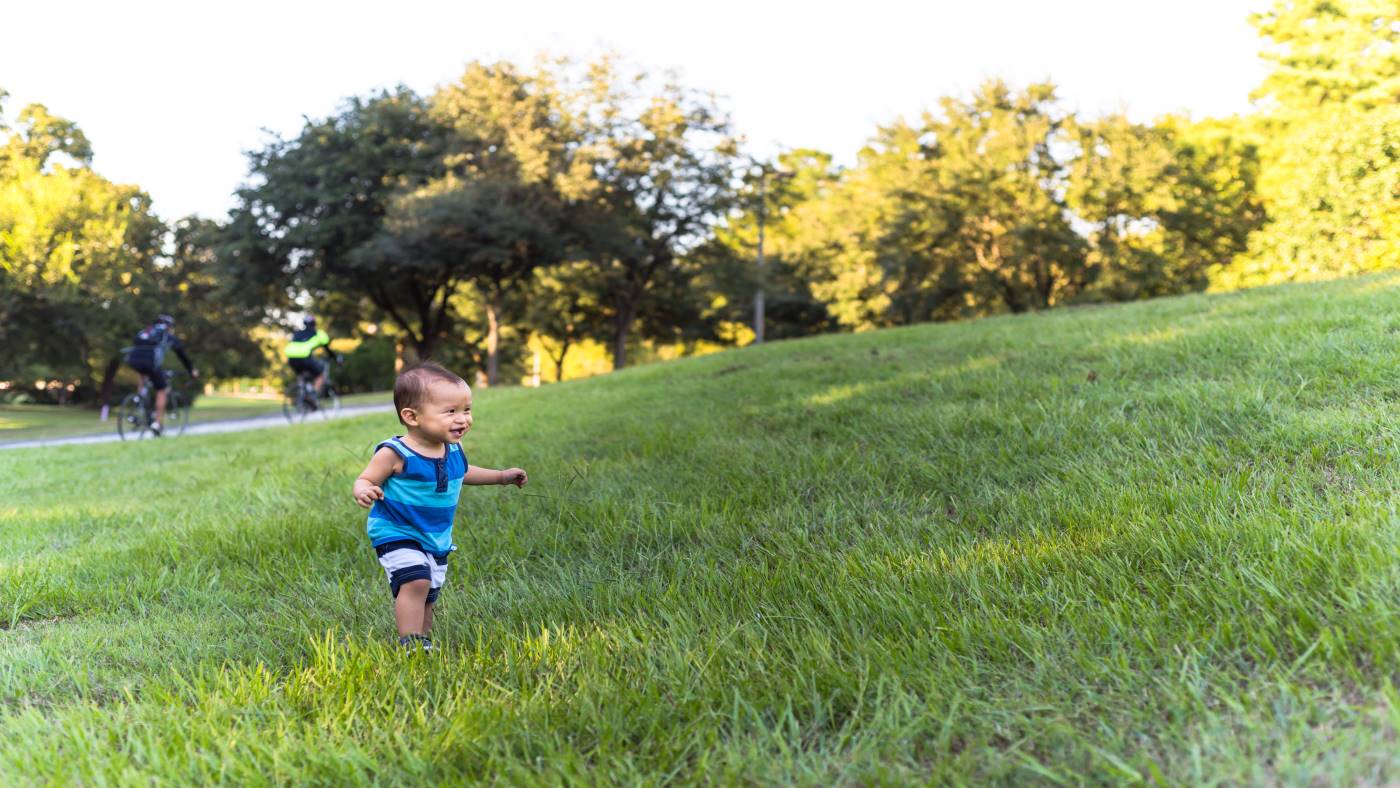Getting into their stride – the development of smoother moves and speed when walking

The development of walking takes much longer in humans than it does in any other species. The main reasons for this are that humans walk on two legs and are juggling balance, posture and gravitational pulls from the earth.[1] Your toddler has been on a great journey so far in developing the skill of walking. Now their journey continues as they experiment with how to change their walking speed.
Stereotypies – what went before
As a baby, your toddler may have rocked their legs back and forth, demonstrating what Psychologist Esther Thelen described as a rhythmical stereotypie.[2] Typically, this movement pattern seen in the rocking stereotypie progressed into crawling, then walking.
Stereotypies and the development of speed
Your toddler is now learning how to further master this rhythmical stereotypie and is trying to develop a smooth pattern of movement that will help them to change and adapt their speed.
Their growing ability to create and control smoother movements with their legs will help them to speed up their pace.[3]
Over the next few months, you will notice that your toddler experiments with the length of their stride, which will also help them explore more controlled changes in speed.[3]
References:
[1] Ivanenko, Y., Dominici, N., Lacquaniti, F. (2007). ‘Development of Independent Walking in Toddlers’. Exercise and Sport Sciences Reviews: April 2007 - Volume 35 - Issue 2 - p 67-73 doi: 10.1249/JES.0b013e31803eafa8
[2] Savelsbergh, G. J. P. (2005) ‘Discovery of motor development: A tribute to Esther Thelen’. The Behavior Analyst Today, 6(4), 243-248. http://dx.doi.org/10.1037/h0100074
[3] Santos, T.R.T., Okai-Nóbrega, L.A., Araújo, P.A., Gomide, R., Mesquita, E., Gomes De Villa, G.A., Lage, A.P., Souza, T.R., Fonseca, S.T., Vieira, M.F., Mancini, C.M. (2022). ‘Lower limb inter-joint coordination patterns are associated with walking experience in toddlers according to limb and stance periods’. Infant Behavior and Development, Volume 68, 2022, 101730, ISSN 0163-6383, https://doi.org/10.1016/j.infbeh.2022.101730